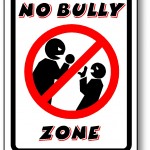 The New York Legislature had a chance this session to mount a major offensive against bullying in public schools. It only went partway with a measure, now headed for Gov. David Paterson, that puts the force of state law against bullying and requires staff training on the issue.
The New York Legislature had a chance this session to mount a major offensive against bullying in public schools. It only went partway with a measure, now headed for Gov. David Paterson, that puts the force of state law against bullying and requires staff training on the issue.
The measure addresses the kind of overt bullying faculty, staff or other students might see in the hallways, in the cafeteria, on the gym floor, around school grounds or on buses. What it doesn’t tackle is the kind of bullying that can easily go undetected — bullying that takes place on Internet social networking pages or on a string of cell phone text messages. It’s called cyber-bullying, and it can be deadly.
The residents of South Hadley, Mass., found that out in January when 15-year-old Phoebe Prince, who had moved to the community from Ireland, hanged herself in response to harassing remarks and humiliating names she had been called on sites such as Twitter, Facebook and even Craigslist, according to published reports.
Legislation approved by the New York Assembly and Senate would go a long way toward preventing bullying at schools by prohibiting harassment and discrimination on school grounds and by mandating training for school staff on how to spot and handle bullying.
Those steps are hardly insignificant, as proved by the backing they have from groups such as the New York State United Teachers and the New York Civil Liberties Union. It is the kind of law that puts school districts on high alert and could avert incidents that can erode a school district’s reputation. It also can minimize ongoing, expensive legal battles like the Amelia Kearney discrimination and harassment case against the Ithaca City School District that stemmed from incidents in 2004-05. The case was dismissed by a state Supreme Court judge in 2009, but the student’s lawyer has pledged to continue the legal fight.
Likewise, a lawsuit involving the Vestal district and a student who reported being bullied in the mid-1990s was still in the courts in 2006 when the state Appellate Division refused a district request to dismiss the suit, which the student’s father filed in 2005.
The bill on its way to Paterson would increase school districts’ accountability for bullying on school grounds, a proposal that had been introduced without success in previous sessions. So the bill, even without cyber-bullying provisions, is an improvement that has the potential of making schools less intimidating for students who are picked on for various reasons, ranging from the way they look to the color of their skin to their sexual orientation.
But the missing component of cyber-bullying leaves the door open for a subversive type of harassment that can be even more damaging than a physical confrontation. The bill Paterson will consider gives state school districts until July 1, 2012 to come up with anti-bullying training measures.
With that generous timetable, there’s an opportunity in future legislative sessions to strengthen this measure, add cyber-bulling to the mix and quite possibly save a student’s life.
Bullying prevention falls short
Take A Stand Against Bullying
 A lot of young people have a good idea of what bullying is because they see it every day! Bullying happens when someone hurts or scares another person on purpose and the person being bullied has a hard time defending himself or herself. Usually, bullying happens over and over.
A lot of young people have a good idea of what bullying is because they see it every day! Bullying happens when someone hurts or scares another person on purpose and the person being bullied has a hard time defending himself or herself. Usually, bullying happens over and over.
• Punching, shoving, and other acts that hurt people physically
• Spreading bad rumors about people
• Keeping certain people out of a “group”
• Teasing people in a mean way
• Getting certain people to “gang up” on others
Bullying also can happen online or electronically. Cyberbullying is when children or teens bully each other using the Internet, mobile phones, or other cybertechnology. This can include:
• Sending mean text, e-mail, or instant messages
• Posting nasty pictures or messages about others in blogs or on websites
• Using someone else’s user name to spread rumors or lies about someone
Unfortunately, not everyone takes bullying seriously, including adults. This is one of the main reasons that the Youth Expert Panel has worked alongside the representatives of the U.S. Department of Health and Human Services (HHS) and the Maternal and Child Health Bureau (MCHB) to develop the “Take A Stand. Lend A Hand. Stop Bullying Now!” campaign.
There are all kinds of reasons why young people bully others, either occasionally or often. Do any of these sound familiar to you?
• Because I see others doing it
• Because it’s what you do if you want to hang out with the right crowd
• Because it makes me feel, stronger, smarter, or better than the person I’m bullying
• Because it’s one of the best ways to keep others from bullying me
Whatever the reason, bullying is something we all need to think about. Whether we’ve done it ourselves or whether friends or other people we know are doing it, we all need to recognize that bullying has a terrible effect on the lives of young people. It may not be happening to you today, but it could tomorrow. Working together, we can make the lives of young people better.
The Garden State Uses ‘Stop Bullying Now!’
New Jersey is one of the more than 30 states that have adopted a state law on bullying prevention in recent years. New Jersey’s anti-bullying law states that harassment and bullying will not be tolerated on school property, at school-sponsored events, or on school buses.
New York state Senate passes anti-bullying bill
New York (CNN) — The New York state senate passed passed an anti-bullying bill Tuesday night to protect all students from discrimination, including that based on gender identity and sexual orientation.
The state assembly had already passed the bill — as it had eight times previously in the last 11 years — and Gov. David Paterson is expected to sign it into law. Bill sponsor Sen. Thomas Duane said it will be “the first time protections for our transgendered community will be enshrined in New York law.”
“The language included protections based not just on sexual orientation but also gender identity and expression,” said Duane, “and unfortunately there was resistance to being inclusive of people of transgender experience and generally the LGBT (lesbian, gay, bisexual, transgendered) community.”
But a spokesman for Sen. Dale Volker, one of three Republicans to vote against the bill in the otherwise bipartisan 58-3 vote, denied that his “no” vote had anything to do with gender identity or sexual orientation.
“No one wants children to be bullied,” said C.D. Miller, Volker’s spokesman. “It’s an inequitable bill. It only protected children from bullying in public schools and did not afford students who attend other schools like Catholic, Lutheran or Jewish schools the same protection.”
Courts have generally ruled that government cannot make laws pertaining to the internal workings of private schools, particularly religious schools.
The “Dignity for All Students Act” calls on school officials to address bullying and bias-related harassment of all kinds that interfere with student safety and learning.
With the bill, New York joins only a handful of other states with an “enumerated” anti-bullying bill, meaning that it specifically lists the types of bullying and discrimination it covers. New York’s bill bans harassment of students by employees and other students while on school property, prohibits discrimination based on race, color, weight, nationality, ethnic group, religion, disability, sexual orientation or gender and requires the reporting of bias related incidents to the state Education Department.
Right wing organizations like the American Family Association have lobbying against the bill and others like it, arguing its enumeration of the types of bullying prohibited make bullying a “thought crime.”
In addition, the bill requires schools to develop guidelines to be used in school training programs to discourage discrimination and to incorporate harassment awareness and sensitivity training into the education curriculum.
“No child should be terrified to go to school simply because of who they are. There is no place for bullying and discrimination in New York’s classrooms,” said Duane.
The bill had passed in the New York State Assembly nine times according to New York State Assemblyman Daniel O’Donnell, who sponsored the bill in the Assembly.
“Every student deserves an environment free of harassment and discrimination, an environment that allows every child to reach his or her full potential.” said Rep. Daniel O’Donnell, who sponsored the bill in the assembly.
Man Pleads Not Guilty In Tattoo Bullying Case
 2 Men Charged With Conspiracy For Their Roles In Tattooing Incident
2 Men Charged With Conspiracy For Their Roles In Tattooing Incident
CONCORD, NH — A Concord man accused of watching his friends tattoo a 14-year-old against his will pleaded not guilty in court on Tuesday.
Travis Johnston, 18, of Concord, was arraigned on charges of conspiracy to commit endangering the welfare of a minor, and criminal liability to conduct of another.
Another Concord man charged in the case, Donald Wyman, 20, waived his arraignment on similar charges.
Mug Shots: Teens Charged After Tattooing Incident
On May 10, the ninth-grade victim left Concord High School for three hours and went to Johnston’s home, where the tattoo was done a weight bench in the basement, according to police.
Johnston and Wyman are accused of watching two of their friends, Blake Vannest, 18, and Ryan Fisk, 19, both of Concord, give the boy the derogatory tattoo on his rear end.
Suspect’s Mom: Son’s Swastika Tattoos ‘Horrified Me Most’
Johnston said in an interview with News 9 following the incident that he blamed himself for letting it take place in his own home.
“Before I got in trouble, I regretted it,” he said. “I wish it never happened.”
Police said in exchange for getting the tattoo, the boy, who they say is intellectually challenged, was promised he would no longer be bullied at school.
In an interview with WMUR News 9, the boy’s parents said the four people charged in connection with the incident should have to pay for the removal of the tattoo and undergo some counseling.
Vannest and Fisk face several charges, including tattooing without a license.
Johnston, Wyman and Fisk are free on bail. Vannest is still behind bars.
Gov Paterson pushes anti-bully hotline for schools one day after news reports a kid who was bullied
PMNY Parenting Issues Examiner Ross Ellis
 Bullying is a problem that affects millions of students of all races and classes. 1 out of 4 kids is bullied and 42% of kids have been bullied while online. Child and teen Bullying and Cyberbullying are at an all-time high. Some kids are so tormented that suicide has become an alternative for them. It has everyone worried. Not just the kids on its receiving end, but the parents, teachers and others who may not understand how extreme bullying can get.
Bullying is a problem that affects millions of students of all races and classes. 1 out of 4 kids is bullied and 42% of kids have been bullied while online. Child and teen Bullying and Cyberbullying are at an all-time high. Some kids are so tormented that suicide has become an alternative for them. It has everyone worried. Not just the kids on its receiving end, but the parents, teachers and others who may not understand how extreme bullying can get.
New York does not have anti-bullying legislation – but maybe they will as a last hurrah for Governor David Paterson.
A day after the Daily News wrote about a teen being routinely harassed at his school, Governor Paterson announced he had submitted a bill to assist kids in trouble. Perhaps he wasn’t aware of all of the other kids in New York who have been harassed at school since he’s been in office … but we’re glad he’s finally taking notice.
The legislation which is way overdue, would require every school to post the state’s school violence hotline so that students could have quick access to services.
The City Education Department launched a campaign against bullying this year with the City Council, and agency officials said they are at work on the case of the bullied victim reported in the Daily News.
It’s wonderful that the City Council is helping 14-year-old Kimquan Green from the Bronx. We are thrilled to see his torment come to an end.
But where was the help last February for 5-year-old Jazmin Loving, a student at Public School 161 in Crown Heights who was tormented by her classmates, beaten and had her hair cut off by her classroom bullies? This was also reported by the Daily News, LXTV and other media outlets.
According to news sources, the governor said his bill also focuses on ensuring that schools are required to follow the state’s human rights laws against discrimination, saying “We have a responsibility to provide the highest level of protection and care to the children of New York State and this legislation would help do just that.”
Hotlines are a good start. And we are delighted to see that child victims are finally getting services to end their pain — yet more is needed.
We applaud Governor Paterson’s efforts and those of the City Education Department and City Council whose assistance and legislation will assist kids in trouble. However, what is critically needed is a bill like the landmark anti-bullying legislation of Massachusetts Governor Deval Patrick.
It is our hope that every child in New York and across the country will be safe from violence in school, on playgrounds, online and in their communities.
Should a child be allowed to have a best friend?
Adults need to respect each child’s friendship style and preferences
by Irene S. Levine, Ph.D.
 An article in today’s New York Times challenged the notion that children should have best friends. A Best Friend? You Must Be Kidding by Hilary Stout raised hackles among parents by reporting that several school and camp administrators are trying, in fact, to squelch best friendships. The professionals’ rationale: Kids should be friends with everyone because exclusivity sets the stage for cliques and bullying.
An article in today’s New York Times challenged the notion that children should have best friends. A Best Friend? You Must Be Kidding by Hilary Stout raised hackles among parents by reporting that several school and camp administrators are trying, in fact, to squelch best friendships. The professionals’ rationale: Kids should be friends with everyone because exclusivity sets the stage for cliques and bullying.
The article glossed over the fact that there are differences among people (adults as well as children) in their need for friendships. By dint of personality, some kids are social butterflies and others prefer to spend more time alone, with an intimate best buddy, or with siblings or other family members. While there are strong cultural pressures to encourage children to expand their social circle, adults need to respect each child’s friendship style and preferences.
In my opinion, neither school officials nor parents should be “regulating” friendships. When teachers (or parents) hover too closely or meddle at the first sign of a tiff between kids, children are denied the opportunity to learn friendship lessons they will need as adults. Kids need to be able to choose friends and work out problems as independently as possible— taking into consideration, of course, the child’s age and level of maturity.
Parents serve as role models to their children. They demonstrate how friends can be lifelong sources of joy, sharing, and support. But parents need to be honest, too, in conveying the message to their children that problems invariably crop up in relationships and need to be worked out. They shouldn’t be ashamed to admit that some differences turn out to be irreconcilable, and that most friendships, even very good ones, have expiration dates.
It’s a mistake to make the leap into thinking that close friendships lead to bullying. In fact, when children are bullied or excluded, it is their true friends who “have their backs” and can buffer them from that trauma.
Ways to put an end to bullying
 In the December movie favorite, “A Christmas Story,” Ralphie and his friends cower in the presence of the neighborhood bully, Scut Farkus. That is, until one day when a snowball in the face provokes Ralphie to fight back and pound Scut into submission.
In the December movie favorite, “A Christmas Story,” Ralphie and his friends cower in the presence of the neighborhood bully, Scut Farkus. That is, until one day when a snowball in the face provokes Ralphie to fight back and pound Scut into submission.
Back in the 1940s, when the movie took place, bullying wasn’t hard to spot. It was physical, verbal and always overtly confrontational. That’s how we often think of bullying today, and in fact, whether it’s kids or adults, face-to-face confrontations are frequently the way bullies go after their prey.
But it’s not the only way. Cyberbullying — through Internet social networks, texting and cell phones — can be as damaging as physical showdowns. And in some cases, it can be fatal, as demonstrated by the death of Phoebe Prince, a 15-year-old Massachusetts girl, who was targeted by classmates and hanged herself in January. The incident triggered widespread national publicity, reminiscent of other such incidents that have occurred and brought similar outrage and concern over cyberbullying.
Yet the practice continues and is likely to do so unless kids police themselves and their friends. But more importantly, parents need to take their heads out of the sand and realize that a Blackberry or laptop can become a weapon even in the hands of the most innocent-looking children.
With the power of the Internet and cell towers at their fingertips, kids who would never dream of shouting at another student or shaking a fist in someone’s face, can send threatening text messages or start vicious rumors on the Internet about another child. And they can do it with such a degree of anonymity that they can be difficult to trace. That is until there is a tragedy, which was the case with Phoebe Prince when authorities tracked down her tormentors and charged them with crimes in her death.
New York has a chance this session to take steps against such behavior with legislative proposals that have been introduced but have not passed in previous years to require school districts to establish policies against bullying and teach kids not to bully or cyberbully. The package of bills also requires reporting by district personnel of bullying incidents and establishes a statewide bullying hotline. Cost could be a factor with the initial price tag set at $53 million to implement such programs, but even if phased in over a few years, it’s a step the Legislature should take.
However, this is not just a legislative issue. The preventive steps that can avoid a Phoebe Prince tragedy can start at home with moms and dads talking to their kids, picking up on their conversations about other children, supervising their use of cell phones and the Internet and making sure that they become neither victims nor perpetrators of cyberbullying.
Some kids might find such intervention an invasion of privacy. Some parents might, too. But it’s like talking to children about drugs and alcohol. If you can save a kid’s life from ruin — your own or someone else’s — interceding is the right thing to do.
Bullying ’causes 44% of child suicides’
 Some 44 per cent of suicides committed by young people between 2000 and 2008 were due to bullying, a national charity has stated.
Some 44 per cent of suicides committed by young people between 2000 and 2008 were due to bullying, a national charity has stated.
According to Beatbullying, at least 26 out of 59 cases involving 10 to 14-year-olds were connected with bullying, research independently verified by a researcher at Warwick University indicates.
The charity correlated figures from the Office of National Statistics with national media reports on youth suicide between 2000 and 2008.
Beatbullying released the figures yesterday (13 June), the second anniversary of the death of Sam Leeson, who committed suicide after being bullied.
Emma-Jane Cross, Chief Executive of Beatbullying, stated that the government must make new commitments to combat bullying in every school.
“The new administration has a real opportunity and responsibility to reach those very vulnerable children who are so badly bullied that they contemplate suicide,” Ms Cross said.
“Suicide should never feel like the only option for any child or young person,” she added.
Beatbullying runs a number of peer mentoring schemes for young people, including CyberMentors.
Involved Parents Less Likely to Raise Bullies
Knowing your children’s friends and good communication are key, study finds
Parents can play an important role in preventing their children from becoming bullies by helping them with homework and getting to know their friends, a new study suggests.
“Improving parent-child communication and parental involvement with their children could have a substantial impact on child bullying,” said study author Dr. Rashmi Shetgiri, a pediatrician and researcher at the University of Texas Southwestern Medical Center and Children’s Medical Center in Dallas.
Shetgiri and colleagues analyzed a 2007 national survey of 45,897 parents with children aged 10 to 17.
Among other things, the survey asked whether the children were bullies. About 15 percent of children were identified as bullies.
The researchers then tried to figure out whether some kids were more likely to be bullies. Black and Hispanic kids had a higher risk of being bullies than white kids, as did those whose mothers reported mental health issues.
Children who were less likely to be bullies included older kids, those who lived in a home where the primary language wasn’t English, and those who did their homework consistently.
Parents who met their children’s friends and talked with their kids were less likely to have children who bullied others, the study authors noted.
“Parents can also work with health care providers to make sure any emotional or behavioral concerns they have about their child, as well as their own mental health, are addressed,” Shetgiri said. “Lastly, parents can take advantage of parenting programs that can help them become aware of and manage negative feelings, such as anger, and respond to their child in a non-aggressive manner.”
The study is scheduled for presentation Monday at the Pediatric Academic Societies’ annual meeting in Vancouver, British Columbia, Canada.









